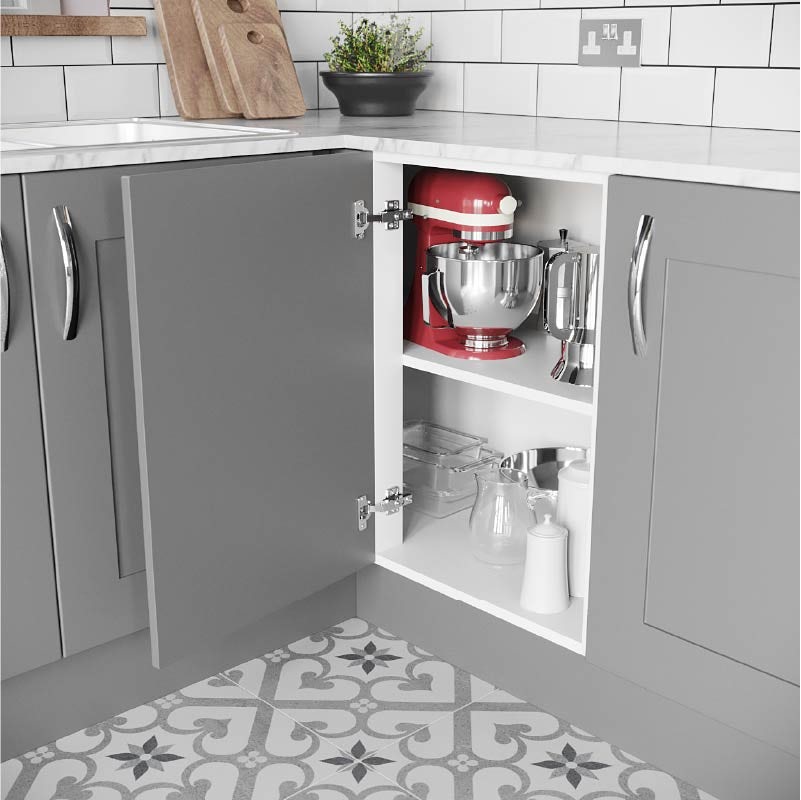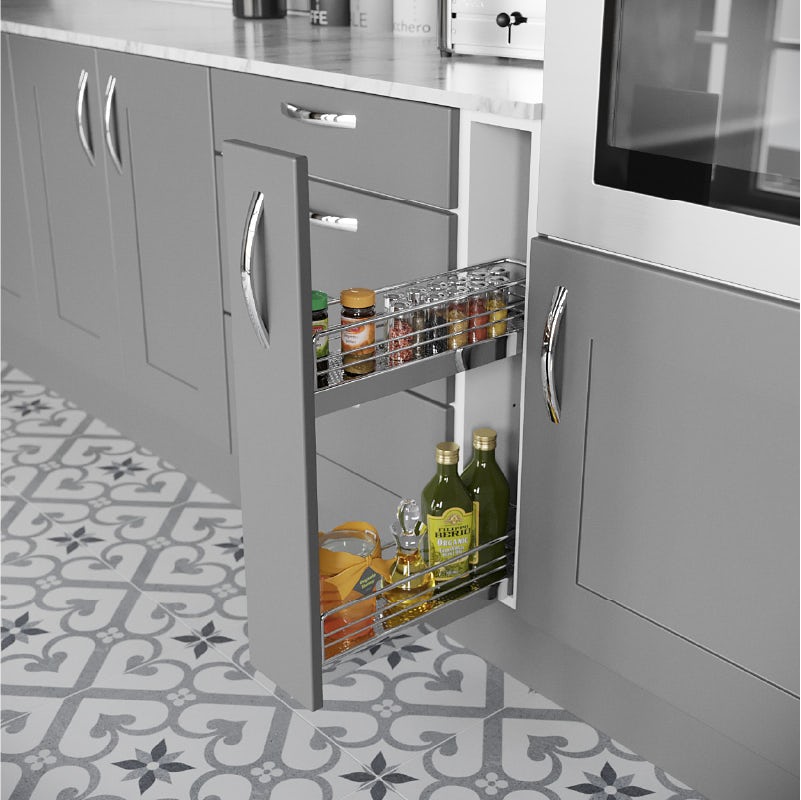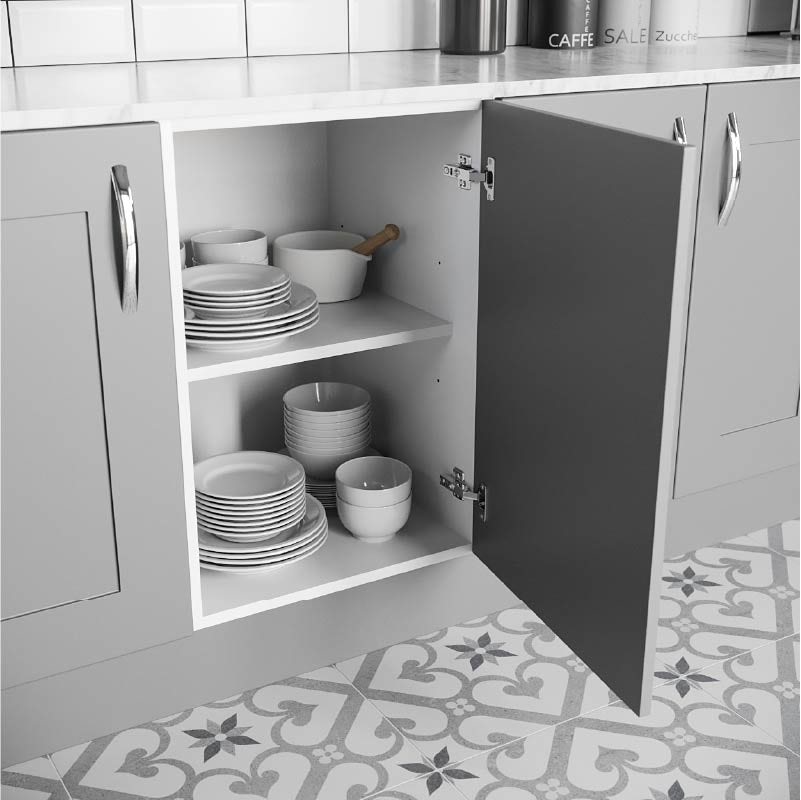If you’ve decided to take on some kitchen DIY yourself, we’ll explain the best way to join kitchen worktops in this comprehensive guide.
Picked out the perfect worktop for your kitchen? Great! But what about installation? If you’re confident with advanced DIY, is this something you might consider doing yourself?
At this point, it is worth stressing that we thoroughly recommend employing an experienced professional to fit your kitchen for you. However, there are elements which you might wish to attempt, and this includes joining your worktops.
With our guide on how to join kitchen worktops, we’ll talk you through everything you need to know, step by step. Click on any of the links below to head straight to a relevant section.
- Tools you will need
- How do you join solid laminate worktops
- How to cut worktops
- Step-by-step guide
- More kitchen advice
- Shop kitchens
Tools you will need for the job
- Contact adhesive
- Long and short wood screws
- Masking tape
- Notepad and pencil
- Power drill
- Power router and bits
- Profiling jig
- Screwdriver
- Tape measure
Discover a huge range of beautiful, high quality kitchen worktops at Victoria Plum
How do you join solid laminate worktops?
Joining together 2 worktops is also known as mitring (see our A to Z glossary for an explanation of terms like this). One of the trickiest parts of any worktop installation is creating clean joints that make the surface look and feel almost seamless. Alternatively, you can use metal strips to hide any joints you create, which is commonly seen on many types of worktop surface.
A full mitre—a 45 degree cut from one corner to another—isn’t often used, as the majority of kitchens aren’t perfectly square. This means joining laminate worktops is a precise task that takes time and patience to complete. While it’s a job that most people with DIY experience can complete, you may prefer to hire a professional to undertake the job (something, as already mentioned, we’d highly recommend).
There are slightly different methods needed depending on the type of worktop you are cutting, and our first step-by-step guide for laminate worktops (below) can also be used for hardwood worktops.
How to cut worktops
In most cases, when you buy your worktops, you will need to cut them to size yourself. You can find full step-by-step instructions on how to do this by reading our guide to cutting kitchen worktops.
Take time with measuring around the sink and any hob the worktop is being fitted around, as these areas can be quite tricky. Also keep any worktop joints at least 100mm away from the sink. Hob cut outs should be at least 60mm from the back and 50mm from the front.
Once cut, use sandpaper to smooth the cut edges. You are now ready to join your worktops.
How to join laminate or wood worktops—a step-by-step guide
Laminate and wooden worktops are by far and away the most popular options for kitchens throughout the UK. You may need to follow different instructions for different materials, but let’s focus on these for the time being.
Step 1—Fit and secure your first worktop
The best way to approach joining your worktops is to pick a corner to begin with and work your way round from there in a methodical manner.
By this point, you should have your base units already in place. Most worktops are designed to overhang the cabinets a little, which means they come complete with a support bar to the front and some form of bracket at the back, where your worktop will be fastened by drilling and fixing in place with screws.
If there is a gap between units, perhaps to allow for an appliance like a washing machine or dishwasher, you will need to fit a timber batten to the wall at least 20mm thick, to support the worktop. These should be secured using the same method as your base units.
Step 2-butting together worktops
Most kitchens will require you to butt together 2 worktops in a corner space, which means you’ll have to join the joints using bolts.
If you are joining together a straight run of worktops, ensure you have created a square cut. For corners you should use a cutting jig which will enable you to create the tie bolt pockets for the bolts—which should feature in the instructions.
Aluminium joining strips can be used to ensure a neat joint between the worktops as an alternative to using filler.
Step 3—putting your second worktop in position
You are now ready to place your second worktop in position on top of the cabinets. At this point, it may be helpful to ask someone to hold it in place, so it doesn’t slip or move.
To secure your second worktop in place, follow the same procedure as the first one, drilling holes from the underside of the cabinet and into the worktop, then fixing with screws.
If the joint requires an aluminium strip joint, ensure the alignment is correct and make a mark for the right fixing positions. Mark a 2mm diameter and then drill 20mm deep into the worktop.
Now you can apply the silicone sealant along the cut edge. Next, screw the aluminium strip into position using long countersunk wood screws measuring 16mm in length by 3.5mm in diameter. Make sure you wipe away any excess sealant with a damp cloth.
Step 4—securing your second worktop in place
Finally, secure the worktop in place using countersunk wood screws measuring 16mm in length and 5mm in diameter—make sure not to overtighten.
Where a strip is being used, add sealant on the cut edge of the worktop join. Before fastening them together, butt one worktop against the other and then remove any excess sealant.
Repeat the steps above to continue joining worktops around your kitchen.
Don’t worry too much if you haven’t achieved the perfect join, as it is something that requires a lot of skill and practice (which is why professionals are better at it!). You can always use filler that is colour-matched to your worktop to cover any gaps, so the worktop still looks presentable and useable in the kitchen.
For compact laminate worktops, which tend to be thinner than standard laminate worktops (sometimes as thin as 12mm), follow the instructions provided with the product.
More kitchen DIY advice
If, after reading this guide, you've decided to fit elements of your own kitchen, we'd highly recommend reading our partner guide to cutting worktops.
At Victoria Plum, we offer plenty of practical kitchen advice, including buying guides, tips on kitchen design and even the latest kitchen installation cost estimates, should you follow the recommended route of professional fitting.
Shop kitchens
If you’ve yet to choose your worktop and accompanying units, why not browse our stylish, quality kitchen range by clicking on the image below?













